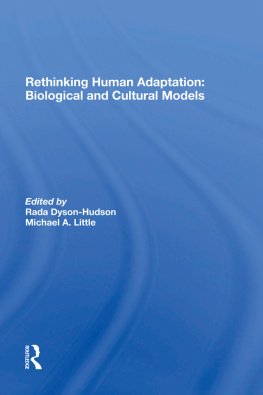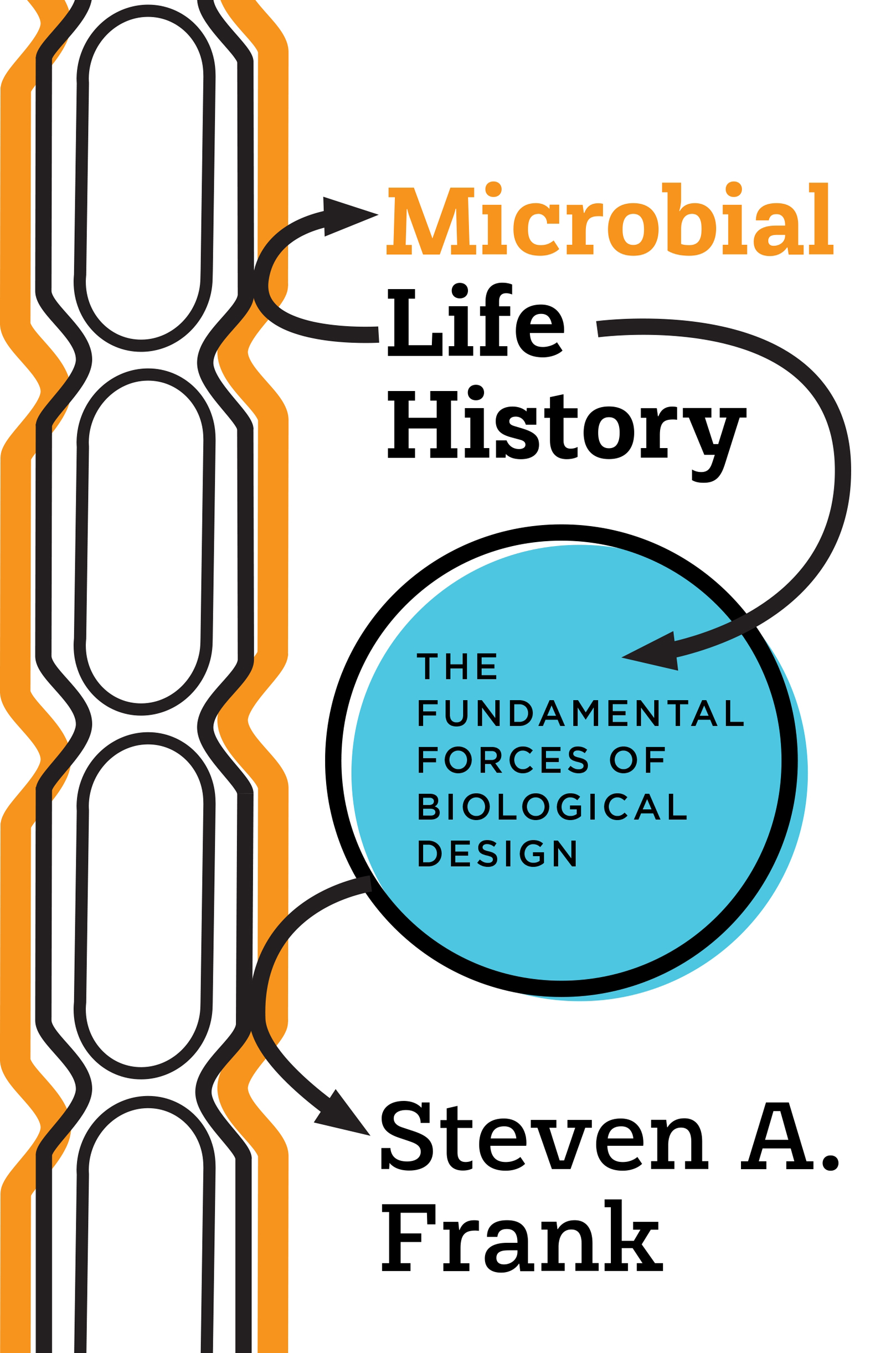Microbial Life History
Microbial Life History
The Fundamental Forces of Biological Design
STEVEN A. FRANK
Princeton University Press
Princeton and Oxford
Copyright 2022 by Steven A. Frank
Princeton University Press is committed to the protection of copyright and the intellectual property our authors entrust to us. Copyright promotes the progress and integrity of knowledge. Thank you for supporting free speech and the global exchange of ideas by purchasing an authorized edition of this book. If you wish to reproduce or distribute any part of it in any form, please obtain permission.
Requests for permission to reproduce material from this work should be sent to
Published by Princeton University Press
41 William Street, Princeton, New Jersey 08540
99 Banbury Road, Oxford OX2 6JX
press.princeton.edu
Library of Congress Cataloging-in-Publication Data
Names: Frank, Steven A., 1957 author.
Title: Microbial life history: the fundamental forces of biological design / Steven A. Frank.
Description: Princeton: Princeton University Press, [2022] | Includes bibliographical references and index.
Identifiers: LCCN 2021059577 (print) | LCCN 2021059578 (ebook) | ISBN 9780691231198 (paperback) | ISBN 9780691231204 (hardback) | ISBN 9780691231181 (ebook)
Subjects: LCSH: Microbial metabolismEvolution.
Classification: LCC QR88.F73 2022 (print) | LCC QR88 (ebook) | DDC 576.8/2dc23/eng/20220120
LC record available at https://lccn.loc.gov/2021059577
LC ebook record available at https://lccn.loc.gov/2021059578
Version 1.0
British Library Cataloging-in-Publication Data is available
Editorial: Alison Kalett and Hallie Schaeffer
Production Editorial: Mark Bellis
Cover Design: Heather Hansen
Production: Lauren Reese
Publicity: Matthew Taylor and Charlotte Coyne
Copyeditor: Cyd Westmoreland
Typeset by the author in TEX
Composed in Lucida Bright
E. M. Forster set out the difference between a story and plot. The king died and then the queen died is a story, he wrote. But a sense of causality is needed to make a plot more than just a sequence of events. The king died and then the queen died of grief is a plot.
The Economist
Contents
- xi
- 1
- 11
- 17
- 29
- 43
- 83
- 95
- 115
- 121
- 123
- 141
- 155
- 189
- 205
- 227
- 253
- 291
- 331
- 333
- 369
Preface
Microbes vary. Some grow quickly, using resources inefficiently. Others grow slowly, achieving efficient reproductive yield.
Why do evolutionary processes lead to such diversity? To answer that question, we must ask: How do the fundamental evolutionary forces shape biological design?
For example, comparing scarce versus abundant food, how do we expect evolutionary forces to alter growth rate and metabolic design?
Comparison provides the key. If we can predict how traits change when comparing different conditions, then we can reasonably say that we understand the fundamental evolutionary forces of design.
We face two challenges. Conceptually, we must understand the fundamental forces to make good comparative predictions. Empirically, we must translate data into the weight of evidence for or against the causal role of specific forces.
This book develops comparative predictions for microbial traits. Recent advances in microbial studies provide an ideal opportunity to test those predictions about diversity and design, perhaps the greatest problems in biology.
I received financial support from the Donald Bren Foundation, the US National Science Foundation, and the US Army Research Office.
A book is nothing without a home and someone who believes in you. Thank you, Robin.
1
Microbial Design
In the past, changes in gene expression and metabolic strategies across growth conditions have often been attributed to the optimization of growth rates. However, mounting evidence suggests that cells are capable of significantly faster growth rates in many conditions. Based on these observations, it is clear that [design] objectives other than optimization of growth rates must be considered to explain these phenotypes.
Markus Basan
Why dont microbial cells grow as fast as possible? Perhaps cells trade growth rate for other attributes of success.
One widely discussed tradeoff concerns rate versus yield. Growing faster uses resources inefficiently. Resources wasted to increase metabolic rate lower the resources available to build new biomass. Fast growth rate reduces the reproductive yield.
Suppose we observe microbes that grow more slowly than the maximum rate that they could achieve. We see mutations that enhance growth. How can we know if the tradeoff between growth rate and yield dominates in metabolic design?
Typically, we cannot know. An observed rise in rate and decline in yield supports the tradeoff. But rejecting the rate-yield tradeoff hypothesis is difficult. For example, the microbes may produce toxins to kill competitors. If competitors are absent in our study, we may see increases in both rate and yield as the unobserved toxin production declines.
Other tradeoffs may be hidden. Perhaps growth trades off with dispersal. Maybe the microbes typically grow under iron-limited conditions and must trade growth rate for scavenging iron.
We could measure more tradeoffs. Although helpful, that approach ultimately fails. We can never estimate the many tradeoffs across the full range of natural conditions that shaped design.
Given those difficulties, how can we understand why growth rate is sometimes maximized and other times not? In general, how can we understand the forces that shape the design of microbial traits, such as dispersal, resource acquisition, defense, and survival?
I advocate comparative hypotheses. As a focal parameter changes, we predict the direction of change in a trait. For example, as the genetic heterogeneity among competitors rises, we predict an increase in growth rate. If the predicted direction of change tends to occur, then the focal parameter associates with a causal force that shapes the trait, revealing the fundamental forces of biological design.
This book divides into two parts. The first part presents the conceptual tools for making comparative predictions. The second part develops comparative predictions for metabolic traits.
We can use this approach to make comparative predictions for the full range of microbial traits, providing a general method for the study of biological design.
1.1How to Read
sets the theoretical background. How does one form and test predictions about the forces that shape biological design?
s principles for the study of design to advance the understanding of microbial evolution?
Readers primarily interested in microbes may wish to start with the second part. As particular concepts arise in that second part, one may follow the pointers to the first part to fill in the background.
Readers primarily interested in evolutionary concepts may wish to start with the first part. The second part illustrates how to turn those concepts into a fully realized program of empirical study.
Although each part stands alone, the real value comes from the synergy between parts. Full progress demands combining s application to metabolism, the engine of life.
That pairing between theory and application provides the best way to study the forces that have shaped biological design.










